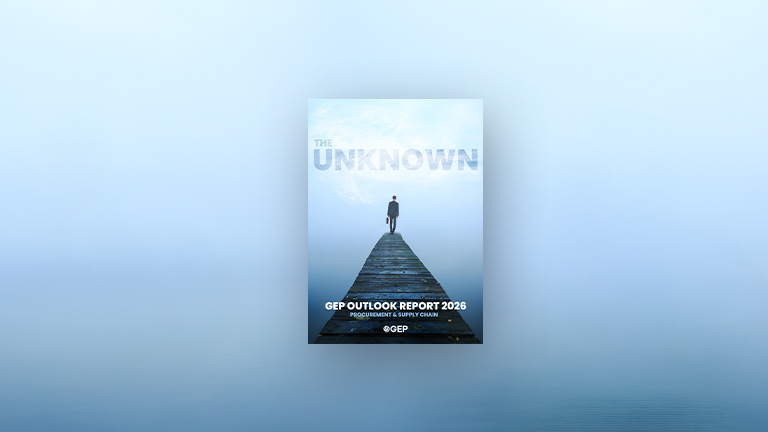
Gain Competitive Advantage by Integrating Procurement and Supplier Management
- Procurement and supplier management must evolve from transactional roles to strategic enablers—driving innovation, resilience, and long-term value.
- Integrated, data-driven approaches align sourcing and supplier engagement with business goals, unlocking smarter decisions and sustainable growth.
- Strategic collaboration with suppliers transforms them into partners in innovation, not just vendors—fueling competitive advantage across the value chain.
May 09, 2025 | Procurement Strategy 5 minutes read
You know procurement and supplier management aren’t the same—but how do you leverage their interplay to unlock real business value?
For seasoned professionals, the challenge isn’t about definitions. It’s about mastering advanced strategies, adopting new technologies, and applying integrated frameworks that transform these functions into drivers of innovation, resilience, and long-term growth. This blog dives into how experts can push procurement and supplier management beyond operational roles and into strategic leadership.
Advanced Procurement: From Cost Control to Value Creation
Procurement has moved well beyond its traditional role of cost-cutting and transaction processing. Today, it stands as a core strategic function—one that can directly influence an organization’s market positioning, risk exposure, and capacity for sustainable growth. Modern procurement teams don’t just negotiate better prices; they shape demand through strategic sourcing and supplier segmentation, focusing their efforts on high-value partnerships that can deliver both resilience and competitive advantage.
This shift also demands a deeper financial lens. Instead of just chasing the lowest unit cost, advanced procurement strategies prioritize should-cost modeling and total cost of ownership —assessing long-term supplier impact on everything from operational efficiency to product lifecycle costs. Supporting this evolution is a wave of digital transformation: AI-powered tools and automated procurement platforms now enable faster, smarter decisions, while improving visibility into spend patterns and supplier performance.
What’s more, organizations are exploring collaborative procurement models, including consortium buying and joint sourcing, to unlock shared innovation and maximize buying power. In this environment, procurement becomes a driver of enterprise agility—equipped to anticipate disruption, manage complexity, and align sourcing with broader business goals.
Supplier Management: Driving Continuous Improvement and Innovation
For organizations operating at a high level of maturity, supplier management is no longer a compliance exercise or a scorecard system—it’s a growth engine. At this stage, suppliers aren’t just vendors; they are integrated partners with a shared stake in innovation, resilience, and long-term value creation.
This begins with investment in supplier development—structured programs that enhance capabilities, reduce inefficiencies, and improve delivery quality across the board. But development alone isn’t enough. Seamless execution also depends on synchronizing supplier operations with internal planning cycles, ensuring that supply chain activities flow as a unified whole.
Risk and compliance management naturally weave into this strategy, using predictive analytics and structured assessments to detect vulnerabilities early and reinforce operational continuity. These foundations support a more relational, trust-based model of supplier collaboration—one built around transparency, shared objectives, and joint problem-solving.
The result is a dynamic supplier ecosystem where continuous improvement is the default setting, and strategic value is created on both sides of the partnership. Supplier management, at this level, becomes a competitive differentiator—not by managing what suppliers deliver, but by empowering what they help you become.
Why High-Growth Firms Risk Falling Behind Without AI in Procurement
Gain expert insights into closing the AI gap and driving smarter, faster procurement decisions.
Integrating Procurement and Supplier Management for Maximum Impact
• Strategy Alignment
This means more than just ensuring procurement and supplier teams are “on the same page.” It’s about directly linking sourcing strategies and supplier initiatives to broader business goals—be it innovation, sustainability, cost leadership, or market expansion. For example, if a company’s strategic goal is to expand into new markets, procurement may prioritize suppliers with regional expertise while supplier management focuses on building collaborative roadmaps that support scalability and compliance in those regions.
• Data-Driven Decisions
Unified, real-time data across procurement and supplier management creates sharper insights. It’s not just about tracking spend anymore—it’s about connecting supplier performance metrics, risk assessments, and demand forecasts to make smarter, faster decisions. This allows teams to proactively identify supply vulnerabilities, negotiate better contracts based on actual performance trends, and optimize supplier portfolios for both cost and value.
• Supplier Segmentation
All suppliers don’t contribute equally—so time, resources, and strategies shouldn’t be spread evenly. Segment suppliers based on factors like strategic importance, risk, innovation capability, or spend volume. Then apply differentiated management: co-develop innovation projects with key partners, automate transactions with tactical vendors, and have contingency plans for high-risk suppliers. Segmentation helps both procurement and supplier management focus their efforts where they create the most impact.
• Cross-Functional Collaboration
True integration means breaking silos. Procurement, finance, supply chain, legal, and even R&D must work together from the outset. For instance, procurement may negotiate a contract, but legal ensures compliance, finance manages payment terms, and supply chain validates delivery capability. When these teams operate in unison, it reduces friction, shortens lead times, and encourages supplier-led innovation through clearer, more consistent communication.
Why Evolving These Functions is Critical Now
As global supply chains become more complex and business pressures intensify, procurement and supplier management can no longer operate in isolation or remain confined to traditional roles. These functions must evolve into strategic powerhouses capable of navigating uncertainty, driving value, and supporting long-term business objectives. Organizations that embrace this evolution are better equipped to build resilient supplier ecosystems, ensuring continuity even amid disruption.
This strategic shift also empowers businesses to align with broader goals like sustainability and ESG compliance, embedding responsible practices into the supply chain. Enhanced automation and data-driven insights allow teams to proactively manage spend, risk, and performance, rather than reacting after the fact. Most importantly, integrating suppliers into the innovation process transforms them from cost centers into collaborative growth partners. In this new landscape, evolving procurement and supplier management isn’t just beneficial—it’s business-critical.
Elevate Your Practice: The Next Frontier
If you’ve already mastered the fundamentals, it’s time to push further. Advanced methodologies, digital tools, and strategic partnerships are the levers to greater business impact.
Consider deepening your skills in cost deployment, supplier preferencing, integrated planning, and strategic negotiation. Explore emerging frameworks, invest in analytics, and build long-term supplier collaborations that reflect your organization’s values and future vision.
Procurement and supplier management aren’t just operational—they’re transformational. Make them work together, and make them work smarter.
Explore GEP's cutting-edge procurement management software and supplier management software.



